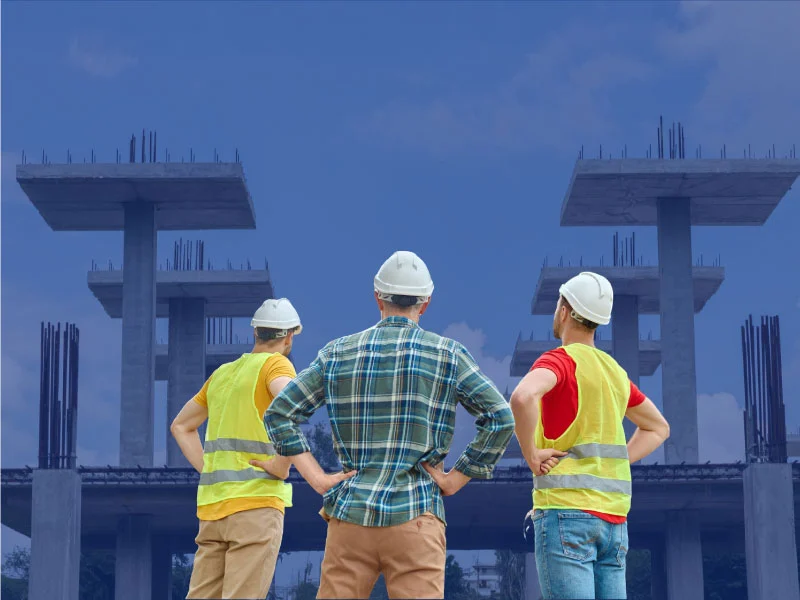Welcome to the era of precast construction! As all the cities keep expanding and infrastructure keeps demanding growth, precast technology is emerging as a game-changer. It is reshaping the way we build by offering much needed speed, efficiency, and sustainability.
Types and Applications of Precast Construction
Precast technology offers a wide range of ready-made components that help to make the construction faster as well as stronger. Since there are multiple types of precast components that serve different purposes, the applications of precast technology are also has a diverse range.
- Structural components – These components mostly include beams, columns, slabs, and walls. They are commonly being used in many of the residential complexes, commercial buildings, shopping malls, and industrial facilities to support all the large structures with required durability.
- Architectural components – Precast cladding panels, parapets, and decorative features really help in improving the overall appearance of buildings. They enhance the visual appeal and hence are commonly used in hotels, commercial buildings, cultural centers, and public institutions.
- Infrastructure components – Bridges, drainage systems, road barriers, & tunnels are essential for public infrastructure. Hence such precast components benefit construction of highways, metro stations, flyovers, and water management systems.
- Modular components – Precast staircases, modular rooms, toilet pods, etc are designed make the installation process much quicker and easier. These elements are used in housing projects, hospitals, schools & hotels.
Machinery Required for Precast Construction
Batching Plant: Mixes the concrete in correct proportions in a way that maintains quality and strength.
Concrete Molding Machine: Shapes precast components like walls, beams, and slabs.
Reinforcement Processing Machine: Cuts and bends the steel reinforcements to add strength in structures.
Curing System: Helps concrete to get hardened fast under controlled conditions.
Lifting & Handling Equipment: Such as cranes, forklifts etc to move all the heavy precast components.
Vibrating Table: Removes air bubbles which makes concrete surfaces smoother as well as stronger.
Cutting and Finishing Machines: To trim and polish precast components for achieving higher accuracy and a better finish.
Regulatory Compliances for Precast Construction in India
Precast construction in India must comply with several regulations to ensure safety, quality, and structural integrity:
- BIS Standards – The Bureau of Indian Standards (BIS) mandates compliance with relevant codes for precast concrete elements.
- IS 15916:2010 – Provides guidelines for designing & erecting the pre-fabricated concrete structures to focus on the structural integrity and safety.
- National Building Code (NBC) – Covers essential aspects such as the structural design, fire safety, and best practices for precast buildings.
- Quality Control Orders (QCOs) – Regulates overall quality of construction materials, including IS 13990:1994 for precast reinforced concrete planks and joists.
Where Precast Works Best (And Where It Doesn’t)
Precast construction is believed to be ideal for larger projects such as housing complexes, shopping malls, offices, and industrial buildings where speed and consistency do make a difference. It also works well for repetitive designs like staircases, walls, and beams. It’s great for projects having tight deadlines, in urban areas that have limited space, and infrastructure projects like bridges, metro stations, and flyovers.)
However precast might not be the best choice for projects that require customized designs or a bit frequent changes. Also, it’s not much suitable for smaller one-time builds where conventional methods are better choice as that’d be more cost-effective. Remote locations with poor transport access can make precast costlier, and projects with tight budgets might struggle with the higher initial costs of molds, transportation, and equipment.
Challenges in Precast Construction Technology
- High Initial Cost: To set up a precast plant and molds is expensive.
- Transport Issues: Moving heavy and large precast parts can be challenging and expensive.
- Less Design Flexibility: Works best for standard designs. Complex and specific designs are difficult.
- Requires Skilled Labor: Trained workers are needed for production and installation.
- Space Constraints: Needs large cranes and bigger space and it is tough to get in crowded areas.
- Difficult to Repair: Modifications and repairs are really harder than the traditional construction.
Conclusion
There is no denying that the precast construction technology is really shaping the future of construction. While it has its challenges that cannot be completely ignored, the benefits outweigh them by big margins when applied in the right scenarios. With evolving regulations and innovations, precast shall continue to redefine modern construction for years to come.
